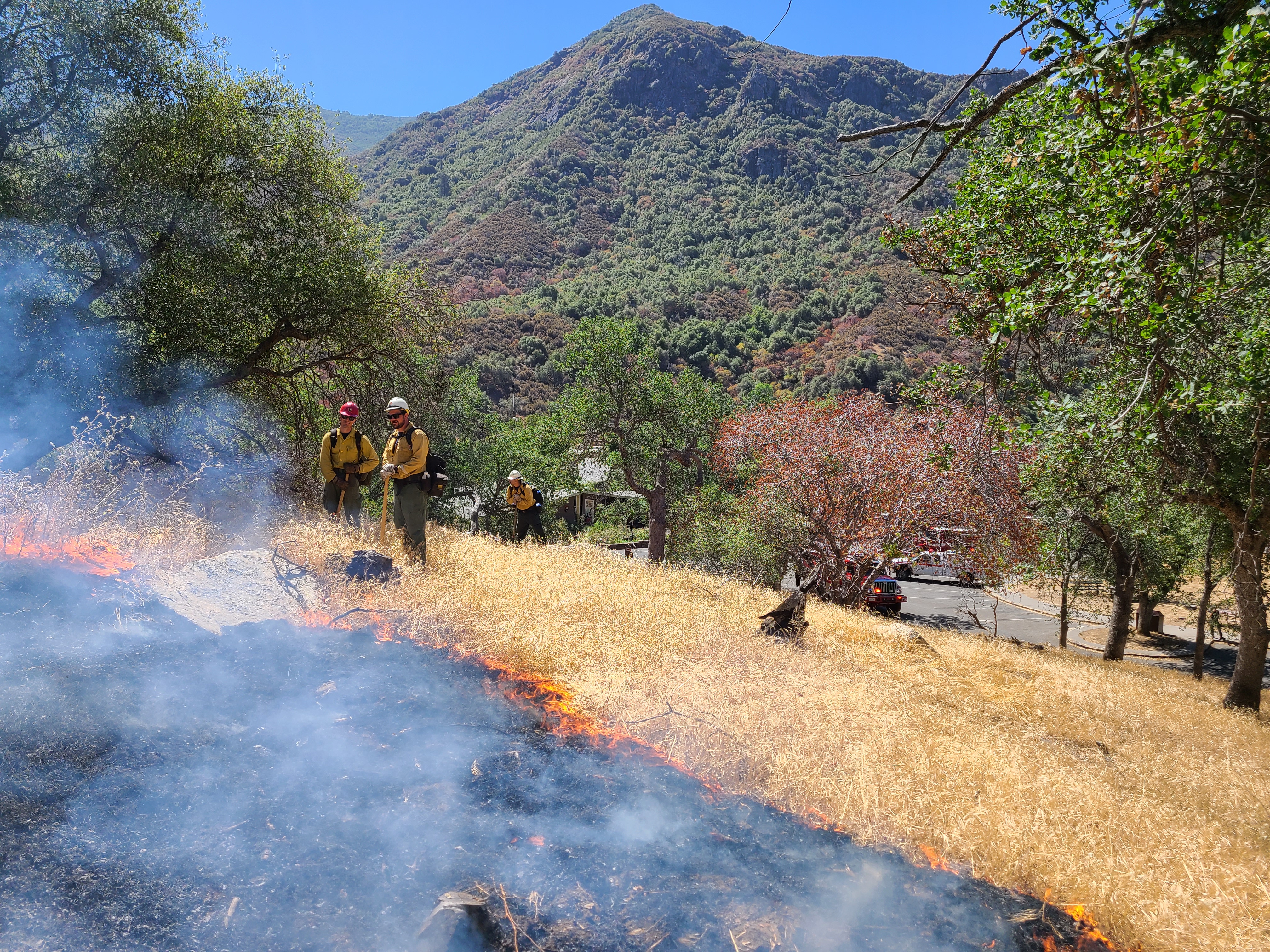News Release
You are viewing ARCHIVED content published online before January 20, 2025.
Please note that this content is NOT UPDATED, and links may not work. For current information,
visit https://www.nps.gov/aboutus/news/index.htm.

Fire managers work to eliminate unwanted dead fuel on a hillside above the Foothills Visitor Center inside Sequoia National Park through the use of prescribed burns.
|
Subscribe
|
Contact: Mike Theune, Fire Information Officer, 559-565-3703
SEQUOIA NATIONAL PARK, Calif. June 9, 2021 – As of this afternoon, ignitions are complete on the 2021 Ash Mountain Prescribed Burn in Sequoia National Park. In all, approximately 28 acres between the Sequoia National Park entrance station and the Foothills Visitor Center, one mile inside the park, and Hospital Rock Picnic Area were treated. Nearly twelve of those acres in the foothills were treated manually through the grazing of the parks’ stock animals or through weed eating.'“We are grateful for the assistance from our partners with Tulare County Fire Department and the Tulare Unit of CAL FIRE on this prescribed burn,” said Andrew Cremers, fuels specialist, Sequoia and Kings Canyon National Parks. ”By working together, we strengthen our relationship among agencies and our commitment to the community of Three Rivers.”
Visitors to the parks may see fire effects along the Generals Highway between the Sequoia National Park Entrance Station and Tunnel Rock and are asked to exercise caution near recently burned areas, as embers and hot spots can persist after active fire has stopped. Light smoke may be visible in the area for several days as the remaining fuels continue to be consumed.
Information about this prescribed burn will be post to the parks’ website, social media pages, and Inciweb at https://inciweb.nwcg.gov/incident/7505
-NPS-
About Sequoia and Kings Canyon National Parks’ Fire Management Program
For over fifty years, our mission has been to use the full range of options and strategies available to manage fire in the parks. This includes protecting park resources, employees, and the public from unwanted fire; building and maintaining fire resilient ecosystems; reducing the threat to local communities from wildfires emanating from the parks or adjacent lands; and recruiting, training, and retaining a professional fire management workforce.
-###-
Last updated: June 9, 2021
